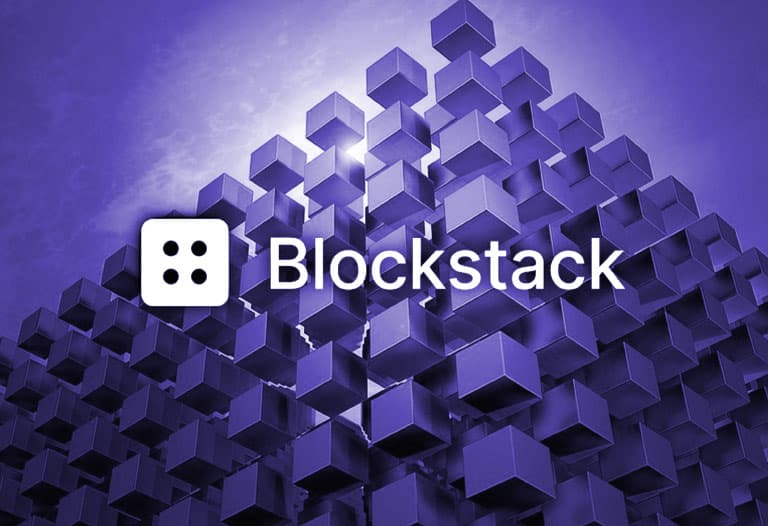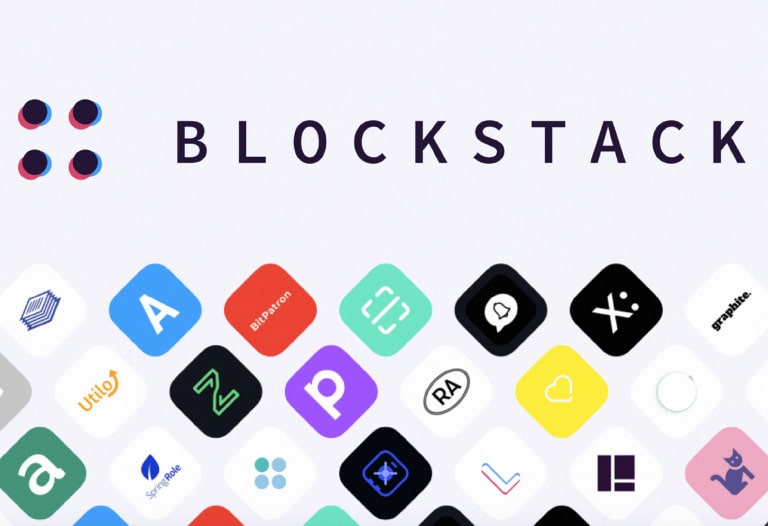
Table of Contents
ToggleThe appearance of dApps or decentralized applications meant a great evolutionary step in the world of cryptocurrencies. Thanks to this, new concepts appeared, and most of them, are related to the Ethereum (ETH) blockchain. Among the new concepts appeared Blockstack, a project that aims to give this evolutionary leap to the ecosystem of the most famous and used cryptocurrency: Bitcoin (BTC).
In a nutshell, Blockstack is a very interesting project that aims to extend the functionality of Bitcoin by acting as a layer 2 protocol capable of increasing the benefits of this cryptocurrency by providing enhanced and global smart contract capabilities. Blockstack is an infrastructure suite designed for mass deployment of DApps. If you find this project interesting, stay reading this article because below I will tell you all about what Blockstack is and how it works.
History of Blockstack
The history of this project has its beginnings in 2013, when Munib Ali and Ryan Shea decided to found Blockstack. The company’s goal was to provide a solution to the main problems of modern web and mobile applications. By the summer of 2014, Munib and Ryan submitted their proposal to the YCombinator accelerator and simultaneously conducted a seed funding round involving Naval Ravikant, Union Square Ventures (USV), SV Angel and others.
All this effort and work began to bear its first fruits in 2017 when the first version of Blockstack was launched running dApps such as Blockstack Browser and a distributed storage system. As a result, in late 2017, the company also conducted two other Series A funding rounds led by USV. Lux Capital, Digital Currency Group and others participated.
Following a new round of funding, Blockstack launched a test network for its blockchain known as Stacks. By the second quarter of the year, the main Stacks v1 network was officially launched, specifically in October. With this launch, tokens were also distributed to early investors who participated in the token purchase round.
In addition to all these releases, the team also launched its App Mining program with 38 registered applications. App Mining is a Blockstack mechanism whose main objective is to incentivize projects and developers to work on the Stacks network. This is achieved by compensating the top most active user applications. Winning apps will receive awards in STX on a monthly basis. Notably, the number of Blockstack-based apps that participated increased by 300% in the first year. App Mining is currently on hiatus, but has registered more than 500 projects, and work is underway to launch App Mining 2.0.
As of October 2019, with nearly 300 applications developed on the platform and more than 100 independent development teams, the Stacks network was still in its V1 version and the V2 version was expected to be released by the end of 2020. Following this new version, Blockstack’s capabilities have improved significantly, especially with the inclusion of Clarity, a special language for smart contracts.

How does Blockstack work?
Blockstack is a layer 2 protocol, so all of its operations, while dependent on Bitcoin, do not store information directly on the Bitcoin blockchain. This maintains a clear separation between the interoperability of the blockchain and Blockstack applications.
It is worth noting that this system makes Blockstack rely on all the infrastructure that operates outside the Bitcoin blockchain, and it is these parts that actually allow Blockstack to carry out its DApps.
However, the development team predicted a clear change in Blockstack’s current operational structure following the release of version 2 which was scheduled for early 2021.
In version 1 operation, Bitcoin and its blockchain are at the most abstract layer of the entire system, i.e. at the bottom. This means that all operations on the Blockstack network depend on the computational work performed on that network. This feature was in the first version and is maintained in the second version.
In addition to this system, Blockstack employs a sidechain Stack to keep track of all its applications internally. The feature is also available now, but enhanced in the second release, adding the ability to implement smart contracts and other tokens. A variety of services and protocols have been integrated on top of this Sidechain Stack in order to support Blockstack’s smart contracts and DApps. Among these features we can mention distributed hosting (Gaia), decentralized authentication system, decentralized DNS, financial services and others that may be added in the future.
Finally, to facilitate application development, Blockstack developed a series of well-defined protocols to facilitate access to all these functions, allowing developers to easily create DApps and deploy them on Blockstack, thus completing the development cycle on the platform.

What is STX?
Like most projects, Blockstack has its own native token called Stack Token (STX). When the network launched in November 2018, a total of 1.32 billion tokens were issued. Of these, a total of 866,827,880 Stacks tokens were allocated to previous buyers after the launch of Genesis Block, while 453,172,120 remained unallocated.
Tokens have limited functionality in the sidechain Stack. They are limited because when we transfer STX tokens, we are actually transferring the value of some satoshi on the Bitcoin blockchain and this activity is reflected both in sidechain for internal bookkeeping and on the Bitcoin blockchain. Simply put, the STX token is actually a token on the Bitcoin blockchain.
Here you can learn more about What is Stacks (STX) and how it works.


